
Review on 🔊 Fosi Audio TDA7498E: Hi-Fi Class D Amplifier for Passive Speakers - 160W x 2 + 24V Power Supply by Tara Greene

An excellent digital amplifier when you consider its true limitations.
The Fosi TDA7498E is an improvement over previous Tripath chip amplifiers. It puts out more power, sounds cleaner and has excellent clarity and rhythm - if you respect its limitations and use it with the right accessories - by which I mean very sensitive speakers. This is my fourth Tripath style Class D amp and each one has been better than the last. The whole concept is that the Texas Instrumentation chip converts the signal into an amplification stage right on the silicon and the chip itself drives your speakers. It has very little additional circuitry and this is the key to its great sound as well as its limited power. As others here have rightly pointed out, it comes with a 24V switching power supply. The amplifier itself has an output of about 20-25 watts. This is not a 160 watt per channel amplifier. Fosi does not endorse this specification and it is likely derived from some sort of 'instantaneous' (i.e. transient) BS power delivery characteristic based on something theoretical. Really usable power is - in my room experience - around 20-25 watts per channel with a ceiling of 1% thd (roughly when listening). I'm a 55 year old longtime audiophile and I know what distortion sounds like. Fosi TDA7498E is a tiny amplifier. Its connector pins can only work with thin flexible speaker wire. It has limitations in driving speakers with sensitivity below 87-88dB/W to satisfy the volume and I will detail how I found this, but TLDR is used with a high quality source, and with efficient speakers I can get a really satisfying audiophile sound out of them, making them a bargain for audiophiles. I am using a Fosi TDA7498E in a near field application with Athena AS-B1.2 speakers (90dB/W sensitivity). My source is typically a Windows 10 machine running Qobuz and local FLAC rips sent to an old PS Audio Ultralink or Muse Model 2 DAC via Musical Fidelity V-Link. I used it with the Topping D70 (which is a little less musical but can play high resolution). I originally used Strathwire Maestro speaker cable, but it was so inflexible that it damaged the connectors on my first TDA7498E. I've since used a used thin flexible wire (Audioquest Type 2.1). When my new, undamaged second Fosi TDA7498E arrived I had just received a pair of KEF LS-50's and was trying to run them with an old AudioResearch tube amp and was having trouble getting a good sound. I was waiting for delivery of a used 50 watt per channel audiophile amplifier (an overlooked and therefore cheap April Audio Stello S100) but its delivery was delayed. I hooked up a Fosi TDA7498E to an LS-50 in my living room and they changed the sound of a sick tube amp a lot. But their grip on the LS-50 was ultimately not musically satisfying. The LS-50's are inefficient (85dB/W) and have low impedance (drop to 3.8 ohms) and they introduced distortion into the small Fosi TDA7498E before satisfactory living room listening levels were achieved. That doesn't agree at all with Fosis' specifications of 160 watts per channel 2-8 ohms. Further confirmation came a week later when the April Audio Stello S100 arrived, which despite its modest 50W per channel rating kicked the doors out of the way of the little Fosi TDA7498E with the LS50. It's a $1,200 amp ($400 used), so it's no surprise that it slightly outperformed the $75 built-in amp. But the reason he beat Fosi was for power. The TDA7498E ran out of gas and started to distort with the LS50 long before the Stello. Anyone who tries to treat the Fosi TDA7498E as if it were an ordinary amplifier with the declared characteristics will be disappointed. same levels. But I can't stress it enough - when used with highly efficient 90dB/W speakers, it has enough power to fill a room with brilliant clarity, great bass and superb musicality. They are absolutely silent in operation. With the source muted, you can crank the volume all the way up and there's no hiss to be heard from sensitive speakers within a 6-inch radius. You can hear it as a dead black background. The dominant sound quality I appreciate about the Fosi TDA7498E is speed. A really good fear or "jump" factor. Not only is this amazing for the price, but for performance that easily outperforms previous, low-power, tripath-style D-class amps. This level of performance is incredible in my opinion, making it a natural fit for audiophiles. Conclusion: 1) Buy the Fosi TDA7498E if you have a small room or near-field application and a speaker with an efficiency of 88 dB/W or more. I assume that 88 dB/W is ok. I've always been happy with just 90dB/W speakers (the super cheap Athena SB-1.2s that were $150 a pair in the early 2000s.) 2) Make sure you're using thin, flexible speaker wire. I'm considering buying a second one and using them with RCA Y adapter cable splitters to run them as bridge monoblocks (not a supported configuration and could very well blow them up). If that doubles the effective 20 watts per channel to 40 watts per channel, that might just be enough to power an LS50. At the same time, it is the heart of my computer workstation for near-field listening, which is actually my main listening position. This tiny integrated amplifier excels in this regard.
- GOLS certified
- Available in black only
New products
Comments (0)
Top products in 🍿 Home Theater

Bluetooth adapter Baseus BA01 black 1 pc.

95 Review
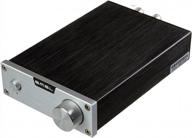
Silver 160W Stereo Digital Amplifier With Power Adapter - S.M.S.L SA-98E For Enhanced SEO

15 Review
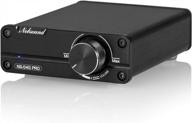
Nobsound Dual TPA3116 Digital Power Amplifier - High-Fidelity Stereo Amp With NE5532P Pre-Amp, Audiophile-Grade 2.0 Channel And 100W×2 Output (Black)

13 Review
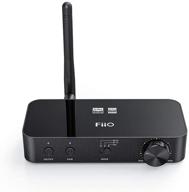
FiiO BTA30: Advanced Wireless Bluetooth 5.0 Long Range 🔊 Transmitter Receiver for PC/TV/Speaker/Headphone with HiFi Dac/DSP and Streamlined APP Control

15 Review
Another interesting products
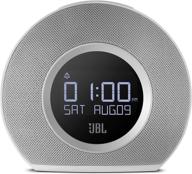
JBL Horizon Bluetooth Alarm Clock Radio with Multiple Alarms, Soothing Ambient LED Light, Automatic LCD Display, and Dual USB Charging (White, AM/FM Radio)

41 Review
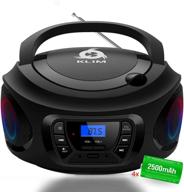
KLIM CD Boombox Portable Audio Player with FM Radio, Rechargeable Battery, Bluetooth, MP3, AUX, Neodymium Speakers, and Upgraded CD Laser Lens (2021 Edition)

11 Review

Stream Your Favorite Tunes With AUNA KR-200 SI Internet Kitchen Radio - Spotify Support, Remote Control, And More!

15 Review
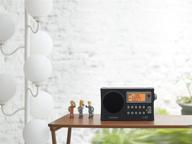
Sangean PR-D4W Portable Weather Alert Radio with AM/FM Bandwidth Narrowing and Auto Tracking for Improved Searchability

12 Review

